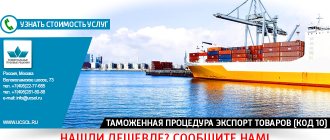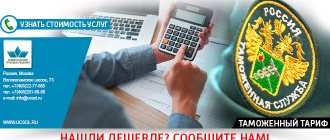The idea of creating a Eurasian Union of States was first proposed in 1994 by the President of Kazakhstan, Nursultan Nazarbayev. In 1995, the Agreement on the Customs Union between Russia, Belarus and Kazakhstan was signed. On October 10, 2000, in Astana, the presidents of the CU member countries established the Eurasian Economic Community (EurAsEC). However, in reality, the Customs Union of Belarus, Kazakhstan and Russia only started working in 2010 with the introduction of the Unified Customs Tariff, the abolition of customs clearance and control at internal borders, and the free movement of goods on the territory of these states. In 2011, the presidents of the CU countries signed the Declaration on the Transition to the Common Economic Space. The Eurasian Economic Commission began work in 2012, the headquarters of the commission is located in Moscow. The Eurasian Economic Union (EAEU) received its current name in 2014. In the same year, Armenia and Kyrgyzstan joined the EAEU.
The first Treaty on the Customs Code of the CU was signed in 2009, and the new EAEU code was signed on April 11, 2021; before July 1, the EAEU member states ratified it, i.e., they completed all procedures for the entry into force of the treaty, which they then notified the Eurasian economic commission. The new Treaty on the Customs Code came into force on January 1, 2021, which means the abolition of the 2009 Treaty, as well as a number of international agreements signed during the existence of the Customs Union.
What are the main changes?
The EAEU includes five states - Russia, Belarus, Kyrgyzstan, Kazakhstan and Armenia. Until recently, the rules for clearing customs differed in each of the countries of the union. Now, with the introduction of the new code, the rules have become the same.
According to the rules, crossing the border itself should now take 4 hours, that is, 6 times faster than according to the rules of the old code. This has become possible since the procedure itself has been simplified and now the goods are declared electronically and often border crossing will be automatic. At the same time, in principle, there are fewer documents and everything is processed through one window.
Due to the presence of a digital signature, in most cases an inspector will not be needed. Even decisions on registration, release of goods, and the form of customs control are made by an automatic system, not a person.
If a document has already been provided at customs, it will no longer be shown to other officials. Now there is a rule that entrepreneurs are not required to provide those documents that officials can already look at in their system.
WHEN DOES IT COME INTO FORCE?
The EAEU Customs Code should come into force on July 1, 2017. A year after the document comes into force, the threshold for duty-free cross-border online trade in the territory of the EAEU countries will begin to gradually decrease. Thus, currently Russians can buy goods worth up to 1,000 euros and weighing up to 31 kg per month in foreign online stores without paying duties. In 2021, this amount will drop to 500 euros per month, above this amount you will need to pay 30%, but not less than 4 euros per 1 kg, and in 2019 - already up to 200 euros for each purchase, the duty above this norm will be 15 % of the amount exceeding the threshold, but not less than 2 euros per 1 kg.
Let us recall that currently the members of the EAEU are Armenia, Belarus, Kazakhstan, Kyrgyzstan and Russia. The Integration Economic Association has been operating since January 1, 2015.
Installment of customs payments and changes in documents
Participants in foreign economic activity can now make changes to the declaration until the last moment - until the system requests confirmation of the data specified in it.
Customs payments can be deferred if you agree to pay interest, like on a loan. But there are cases when interest will not be accrued for deferred payments for six months - under international agreements, government orders, force majeure or support of agricultural activities.
According to Article 59 of the Code, payments to agricultural producers can be deferred without interest, either when supplying planting or seeding material, plant protection products, agricultural machinery, livestock breeding facilities (breeding farm animals, poultry, fish and other livestock breeding facilities) for the agricultural sector, breeding products ( material), products used for animal feeding.
Payment of interest with a six-month deferment is possible for goods that are imported for use in industrial processing, including raw materials, materials, technological equipment, components and spare parts for it.
A deferment for a month is possible for everyone with payment of interest at the refinancing rate. An interest-free deferment of payments for 45 days is possible for authorized economic operators.
Finally, an interest-free deferment of up to 15 months is provided for determining the exact customs value for a range of goods for up to 15 months.
Types of customs procedures of the EAEU Customs Code
Behind the scenes, regimes are divided into 4 groups:
- basic;
- economic;
- final;
- special.
The main modes are the most in demand. With their help, they buy foreign goods or sell Russian goods abroad. Among them:
- release for domestic consumption;
- export;
- customs transit.
Economic regimes are a little more complicated. These include:
- processing on and outside the customs territory, for domestic consumption;
- customs stock;
- temporary import (admission);
- free warehouse.
Final procedures are required to complete processes initiated after temporary export or import, processing in (outside) customs territory. Other regimes from this group are aimed at the immediate completion of activities unilaterally, when the cargo is confiscated - “refusal in favor of the state”, or destroyed - “destruction”:
- re-export;
- re-import;
- destruction;
- refusal in favor of the state.
The peculiarity of special regimes is that the conditions for them are stipulated by separate legislative acts. For example, the EAEU member countries have concluded interstate agreements that state that foreign trade participants registered on their territories have the right to duty-free trade within the Customs Union.
A similar international agreement is in force between the CIS countries, where foreign trade participants from one state (subject to certain conditions) have the right to import goods duty-free into the territory of another CIS state:
- temporary export;
- special customs procedure;
- free trade;
- free customs zone.
The most popular modes include release for domestic consumption, export, customs transit, temporary import and export.
Export and import
Chapter 21 “Customs Export Procedure” of the EAEU Customs Code regulates export operations from the territory of the Customs Union. The declarant has the right to place the goods under this procedure even if temporary export was initially declared for it. Exports require payment of import duties and compliance with non-tariff regulations. In this case, the item of sale loses its status as a vehicle product.
Chapter 20 “Customs procedure for release for domestic consumption” of the EAEU Customs Code contains the rules for conducting import operations. Goods placed under the “import” regime are located and used on the territory of the Customs Union without any restrictions. The foreign trade participant is required to pay taxes and duties. When applying non-tariff regulation measures, they provide documents confirming compliance with the requirements.
Re-export and re-import
Chapter 32 of the EAEU Labor Code is devoted to the re-export regime. It allows you to purchase foreign goods at low prices and resell them at a higher cost. It is used to return a purchase to the seller if a product is found to be defective or does not meet the conditions.
Placing goods under re-export regime has a number of restrictions that are important to consider.
Prohibited:
- re-export goods if they have stayed in the country for more than a year;
- perform it if goods subject to re-export were repaired on the territory of the Customs Union, or they were used there;
- re-export goods if they do not have all the documentation;
- do re-export of products if customs. the authority is unable to identify her.
Re-import is discussed in Chapter 31 of the EAEU Labor Code. This regime allows you to return back goods exported from the territory of the Union within a regulated time frame without paying duties, import customs taxes and applying non-tariff control measures. In other words, this is a process when the goods were wanted to be sold abroad and were even taken out of the Russian Federation, but for some reason they were returned back.
The following types of goods cannot be placed under re-import:
- products previously exported from the Russian Federation under export regime, in accordance with other types of customs regime;
- items prohibited by law from being exported outside the Russian Federation or imported.
Temporary import and export
Temporary import is regulated by Chapter 29 of the EAEU Labor Code. Goods placed under this regime are allowed into the territory of the Customs Union only for a limited period. It is written in the declarant’s documents and depends on the terms of the contract, but in any case does not exceed 2 years. The declarant is conditionally, fully or partially exempt from import duties and taxes.
Reference. This procedure does not include food and drinks, tobacco, alcohol, waste and goods prohibited for import.
Temporary export is presented in Chapter 30 of the EAEU Labor Code. The regime determines the procedure for using Russian goods outside the territory of the Customs Union within a certain period. The declarant using it is exempt from paying taxes and duties. The items of the transaction lose the status of goods of the Customs Union.
Temporary export cannot be issued for food products, drinks, excise products, consumables, and waste. All items must remain in their original condition, except for normal wear and tear. It is allowed to re-import cargo.
Recycling procedures
The EAEU Labor Code distinguishes 3 types of processing procedures: on the customs territory, outside it and for internal consumption.
In Chapter 24 of the EAEU Labor Code “Customs. processing procedure in the customs territory” it is said that cargo that is imported into the territory of the Customs Union undergoes processing there and leaves ready. In this case, the declarant does not pay the duty, and the goods retain their foreign status (both before and after importation).
A number of procedures are applied to the cargo, depending on its content: processing, installation, assembly, adjustment, repair, raising animals, trees and other bush species, copying and reproducing information, etc.
Note. Everything that remains after processing is placed under customs. procedures.
Chapter 25 “Customs procedure for processing outside customs. territory” The EAEU Labor Code states: products are sent for processing to other countries outside the territory of the Customs Union for a limited period. You will not have to pay export duties for transportation. After actual export from the Customs Union, products lose their status as Union goods.
Chapter 26 “Customs procedure for processing for domestic consumption” of the EAEU Customs Code states that foreign goods are required to complete processing procedures on the territory of the Customs Union. No import duties are paid for imported cargo. As a result, imported goods lose their original properties.
The duration of the procedure is determined depending on the time required to complete the processing.
bonded warehouse
In Chapter 23 “Customs procedure of customs. warehouse" EAEU Labor Code specifies that this regime is used only for foreign goods with a shelf life of no more than 180 days. Non-tariff control measures are not respected and duties are not paid on its use at the time of import. However, then the cargo is placed under customs control for up to 3 years. The products retain the status of foreign goods.
There are 2 types of warehouses:
- open (available for storage of any goods and use by persons authorized in relation to the products);
- closed (designed to store the cargo of the owner of this warehouse).
Customs transit
Selecting a procedure from Chapter 22 “Customs procedure. transit" EAEU Labor Code is required when the declarant simply needs to transport cargo through the country to get to its destination. In this case, duties are not paid, but the amount of security for payment of taxes is paid (these funds are returned to the payer after the cargo leaves the country).
Free customs zone, free warehouse
Both modes are similar. Imported cargo is under the control of customs officers for some time and stored at special sites. There are no duties paid for the goods. The order of procedures is adopted by international treaties of the CU member states.
The free zone is regulated by Chapter 27 of the EAEU Labor Code, and the free warehouse is regulated by Chapter 28.
Free trade
It is carried out in accordance with Chapter 33 “Customs. Duty-free trade procedure" of the EAEU Labor Code. Goods are sold at retail in stores and duty-free outlets (Duty free) to individuals leaving the territory of the vehicle. Trade items are exempt from taxes. The owner of the store in which the trade is carried out becomes the declarant.
Destruction
Chapter 34 “Customs destruction procedure” of the EAEU Customs Code states that goods are liquidated under the control of customs officers. There are no duties or taxes paid for the products. The procedure includes neutralization, complete or partial destruction.
Important! Liquidation is carried out at the expense of the declarant who placed the cargo under this regime.
If a product is capable of harming nature or public health, it is not destroyed. The waste remaining after the procedure that is to be used is declared. Otherwise, they are neutralized, buried or disposed of in another way.
Refusal in favor of the state
This procedure is carried out in accordance with Chapter 35 “Customs procedure for refusal in favor of the state” of the EAEU Customs Code. Foreign goods are transferred to the ownership of the state free of charge. There is no duty to pay. The product acquires the status of a CU product.
Special customs procedure
According to Chapter 36 of the EAEU Labor Code, the conditions of the process are established by state laws. In this case, the category of goods is taken into account.


